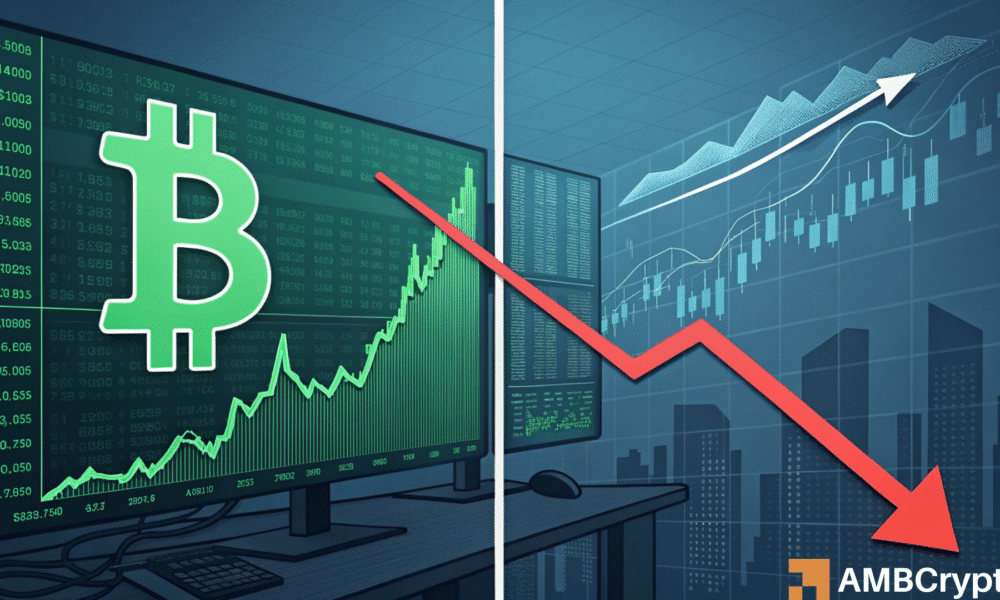Bitcoin Market Analysis: Rising Demand and Technical Insights
Bitcoin (BTC) has recently displayed a notable upward trajectory, marking a 4.5% gain over the past three days. This surge comes as the cryptocurrency breaks above a month-long descending trendline resistance, indicating a potential shift in market sentiment. As interest in Bitcoin grows, influencing factors such as the declining U.S. Dollar Index (DXY) and heightened demand for alternatives like gold are worth examining. While the traditional markets exhibit volatility, Bitcoin’s growing strength could signify a more complex narrative on investor behavior in uncertain times.
One key driver behind Bitcoin’s price performance has been a substantial sell-off in the U.S. dollar, pushing the DXY to its lowest levels since 2022. This dollar weakness tends to favor Bitcoin and other alternative assets, as investors increasingly turn to cryptocurrencies as a hedge against economic instability. Nevertheless, despite Bitcoin’s recent gains, it remains in a broader downtrend that has persisted over the past three months. This context suggests that while recent price movements appear positive, they may not guarantee security for investors looking for stability in the crypto sphere.
On the regulatory front, the Texas Bitcoin Strategic Reserve Act is under deliberation, which could see the state allocate $500 million annually to hold Bitcoin on its balance sheet. If passed, Texas could become the first state in the U.S. to formalize Bitcoin holdings within its public finances. This development could have a significant impact on Bitcoin’s legitimacy and adoption, enhancing its visibility and credibility as a mainstream asset.
From a technical analysis perspective, Bitcoin’s breakout above the trendline resistance offers bullish signals. The On-Balance Volume (OBV) indicator has shown steady increases, reflecting sustained buying pressure. As Bitcoin tests this trendline level, a close above $87.5k is crucial as it could signal a long-term uptrend in the market. Such a movement would align with positive momentum indicated by the Relative Strength Index (RSI), which is currently hovering around 59, suggesting increasing bullish sentiment among traders.
However, market participants should remain cautious as Bitcoin approaches the critical $92k level, which has previously acted as strong resistance. The recent performance of Bitcoin, even while the Dow Jones Index (DJI) experienced notable declines, hints at a potential decoupling from traditional markets. This distinct behavior might be indicative of Bitcoin’s growing independence or its role as a safe-haven asset amidst declining stock values. Nevertheless, this market state also invites a higher likelihood of increased volatility and the potential for price reversals.
A three-month liquidation heatmap analysis reveals that Bitcoin is entering a phase where selling pressure could escalate. The range of $89.2k-$91k is highlighted as a bearish reversal zone, suggesting that traders might face significant challenges should Bitcoin’s price approach these levels. The liquidity zones show a substantial buildup of short liquidations, which could lead to a potential price pullback. While the upper limit of $100k remains a notable target, lower support levels, particularly around $82.7k, warrant careful monitoring to avert losses.
In conclusion, while Bitcoin’s gradual recovery is promising, traders should exercise caution in the current environment. Analyzing market trends, technical indicators, and regulatory developments will be crucial in navigating the complexities of the crypto market. As Bitcoin contends with pressing resistance levels and volatile market conditions, strategic preparedness and informed decision-making will play a vital role in leveraging potential market movements.
















